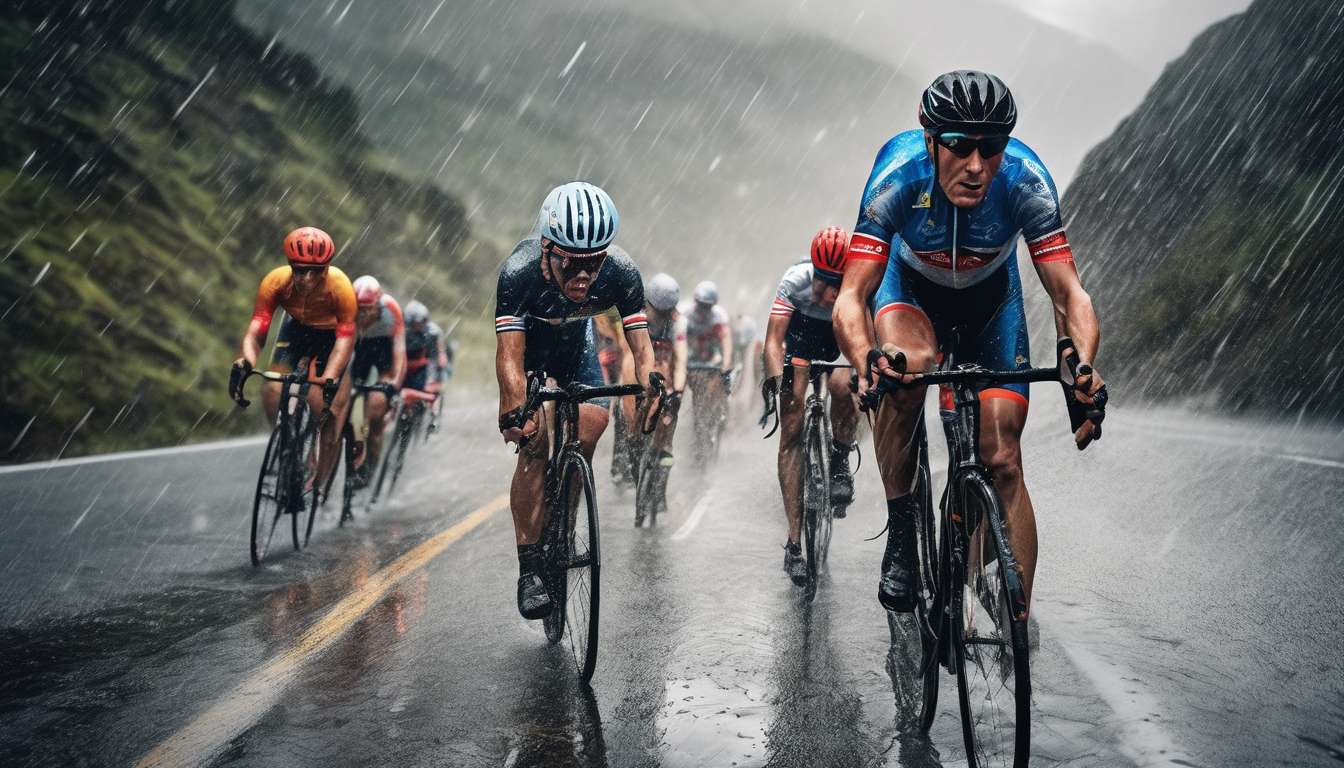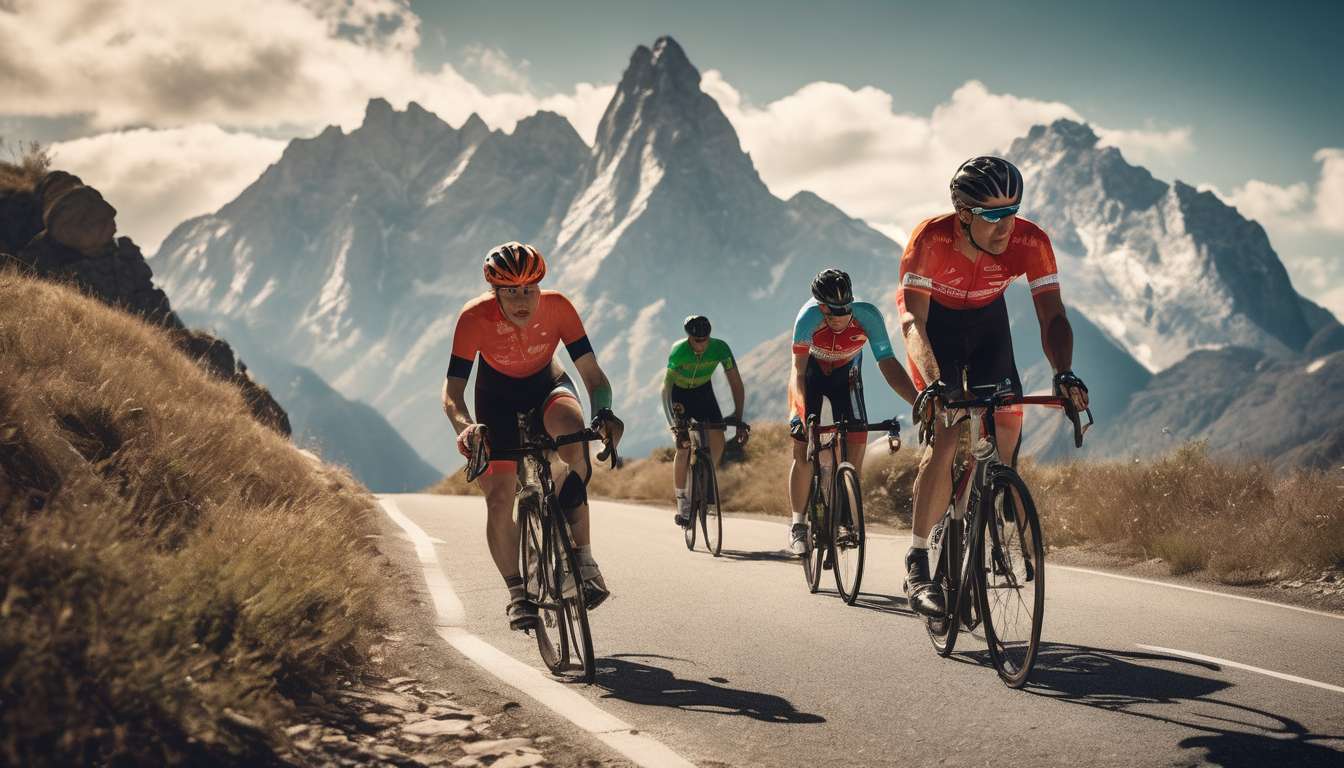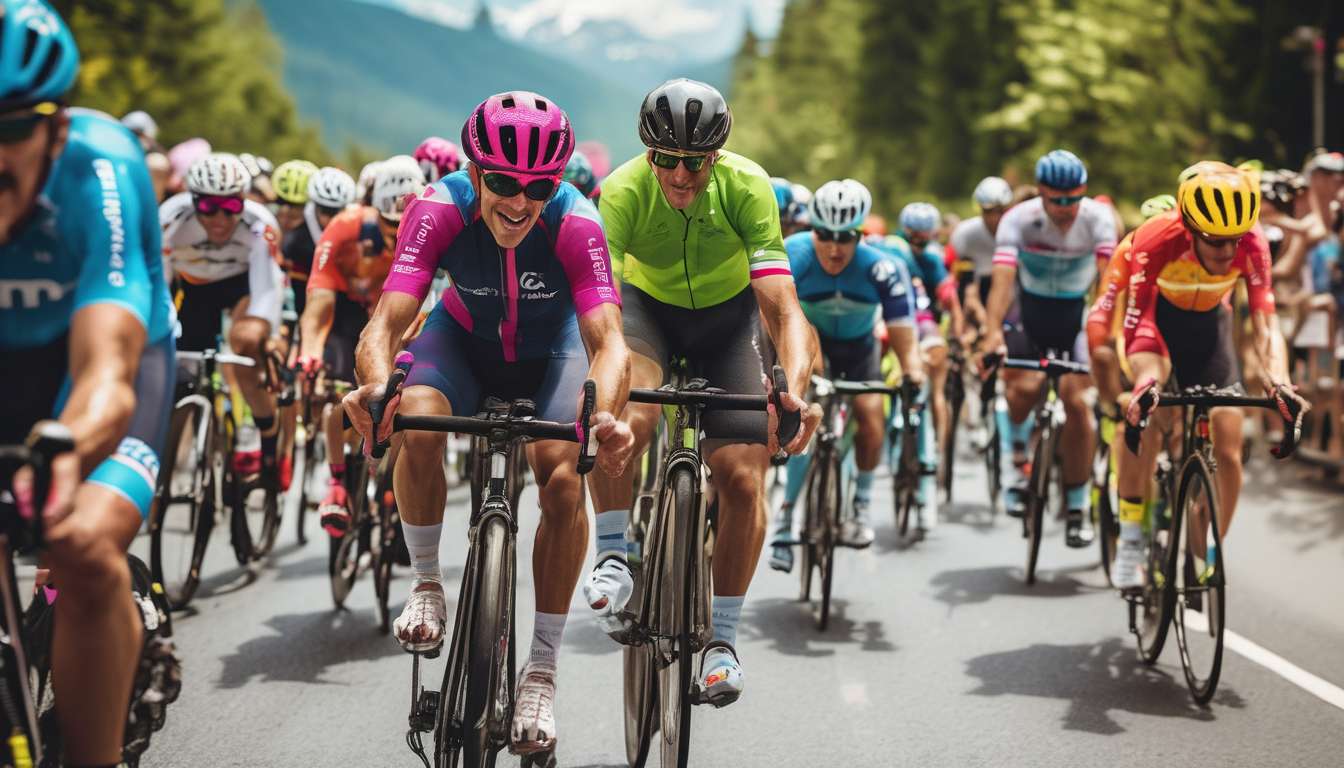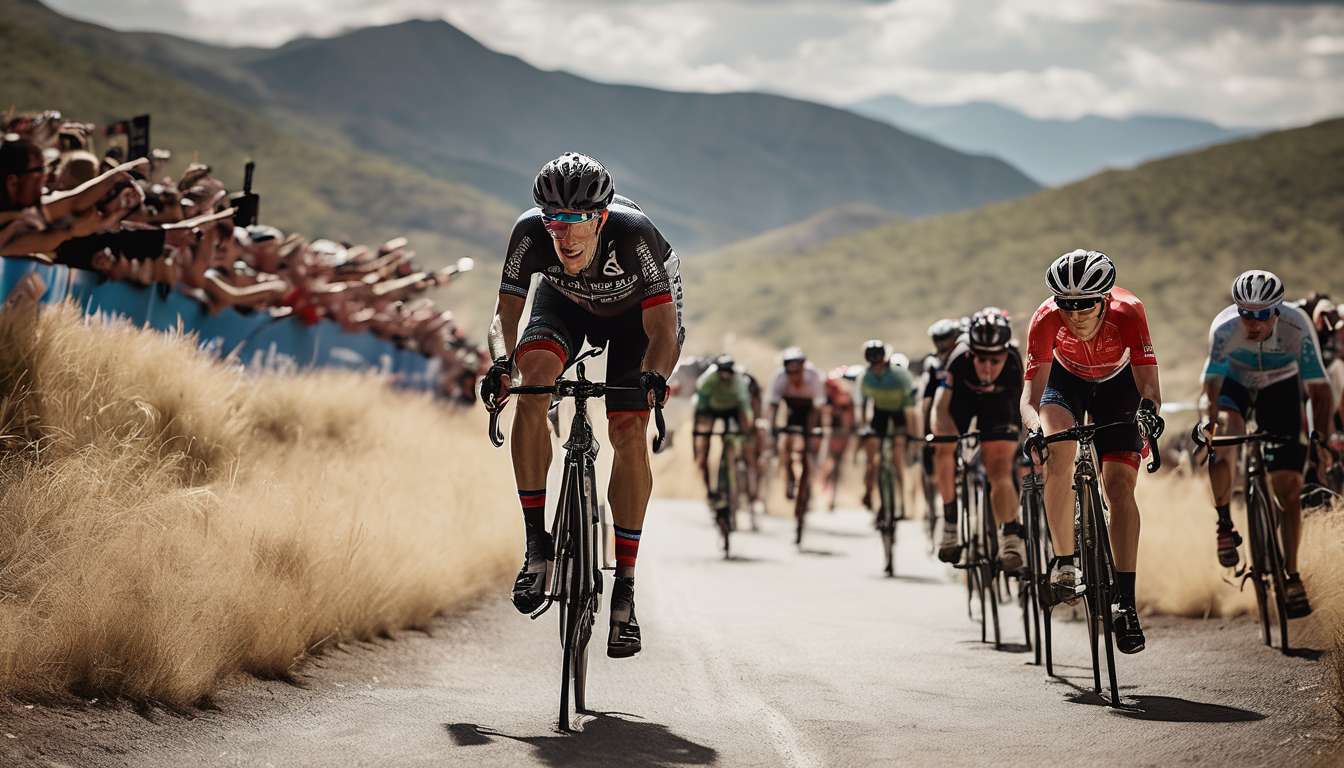As cycling enthusiasts and analysts, we have always been fascinated by the myriad factors that influence the outcomes of major races. Among these, weather stands out as a formidable yet often unpredictable player.
Our collective observations and studies reveal that elements like wind, rain, and temperature can dramatically alter race dynamics and outcomes.
Rain:
- When the skies open up, roads become slick and treacherous.
- It tests riders’ skills and strategies to their limits.
Heat:
- Blistering temperatures can sap energy reserves.
- This demands meticulous hydration strategies.
Wind:
- Plays a dual role in races.
- Sometimes offers a helpful push.
- More often poses a relentless challenge.
Together, we delve into how these weather conditions shape the tactics of both individual cyclists and teams, offering insights into how champions adapt and thrive.
By examining past races and speaking with seasoned athletes, we aim to uncover just how pivotal weather can be in crowning cycling’s greatest victors.
Rain’s Impact on Cycling Races
Rain significantly alters the dynamics and outcomes of cycling races. As a community, we understand how weather plays a crucial role in shaping our performance and the strategies we employ on race day.
When raindrops begin to fall, it’s not just the roads that get slippery; our tactics must also adapt to the changing conditions. Rain forces us to rethink our approach, testing our ability to remain agile and adjust our plans swiftly.
Challenges of Wet Weather:
- Reduced visibility
- Increased risk of crashes
Our bikes demand extra care, as rain affects their performance, just like it does ours. We must adapt by maintaining a steady grip and enhancing our focus, reminding each other to stay alert and watchful.
In the face of rain, we bond over shared experiences, learning from one another how best to conquer the elements. It’s the spirit of adaptation that unites us, transforming these weather-induced hurdles into opportunities for growth.
Heat’s Influence on Performance
In extreme heat, cyclists must adjust their strategies to manage energy levels and prevent overheating. Our performance hinges on successful adaptation to the weather, ensuring we remain competitive and resilient.
Hydration is crucial. We learn to hydrate effectively by choosing the right balance of electrolytes to keep our bodies in peak condition.
Pacing is another key adjustment. We modify our pacing, understanding that pushing too hard in the heat can quickly drain our reserves and jeopardize our race.
Our community knows the importance of wearing breathable attire, designed to enhance ventilation and wick away sweat.
- Sharing tips and experiences strengthens our bond.
- We collectively seek the best ways to combat the challenges of racing in hot conditions.
- We embrace the camaraderie that comes from tackling these shared obstacles.
In the face of sweltering weather, we remain vigilant, attuned to our bodies’ signals. Through adaptation and mutual support, we’re not just surviving the heat—we’re thriving, united in our pursuit of performance excellence.
Wind’s Role in Race Dynamics
Wind plays a pivotal role in cycling races, influencing our tactics and energy conservation strategies. As a team, we adapt to the ever-changing weather conditions, tailoring our approach to harness or counteract the wind’s force.
Headwinds and Tailwinds:
- A strong headwind can sap our energy, demanding collective effort to shield each other and maintain performance.
- Conversely, a tailwind offers us a rare opportunity to conserve energy or break away from the pack.
Crosswinds present a unique challenge, testing our adaptability and camaraderie. They create echelon formations, where we ride at an angle to minimize resistance.
To navigate crosswinds effectively, we must:
- Communicate and position ourselves strategically.
- Ensure no one is left vulnerable to the wind’s power.
In these moments, our unity and shared understanding become our greatest assets.
By adapting to the wind’s whims, we not only improve our performance but also strengthen our sense of belonging within the team. Together, we face the challenges that weather presents, turning them into opportunities for growth and success.
Slick Roads and Strategy Testing
Navigating slick roads requires us to refine our strategies and trust in our riding skills to maintain safety and competitiveness. When the weather shifts and rain transforms our path into a slippery challenge, we band together, united by our shared commitment to excel. Our performance hinges on our ability to adapt quickly, making strategic decisions that prioritize both speed and security.
Key Considerations for Riding on Slick Roads:
-
Tire Choice and Pressure Adjustments:
- Small changes in tire choice and pressure can have a massive impact on grip and control.
-
Heightened Awareness:
- Each turn and descent demands increased awareness.
-
Team Communication:
- Open communication within our team fosters a deeper connection and ensures safety.
Together, we learn to harness the power of our collective experience, transforming adverse conditions into opportunities for growth and triumph.
As we ride through the rain, we embrace the camaraderie that comes with facing these trials together, emerging stronger and more resilient. After all, it’s not just about the race; it’s about the journey we share.
Energy Drain in Blistering Heat
Under the scorching sun, we push ourselves to the limit, acutely aware of how the intense heat can rapidly drain our energy. Riding in such weather demands more than just physical endurance; it requires mental resilience and strategic adaptation.
We’re united in this challenge, knowing that our performance hinges on how well we manage the relentless sun. The heat feels oppressive, but it also binds us together, reminding us that we’re part of a community that thrives on overcoming adversity.
To maintain our competitive edge, we adapt by:
- Tweaking hydration strategies
- Pacing ourselves more carefully
We focus on conserving energy where we can, understanding that even the smallest misstep can lead to exhaustion.
Our shared experiences under these taxing conditions teach us the importance of preparation and mutual support. Together, we confront the harsh elements, growing stronger and more connected, proving that with the right mindset and adaptation, we can conquer blistering heat and excel.
Helpful Tailwinds vs. Headwinds
In cycling, tailwinds can be our greatest ally, propelling us forward with ease. They lift our spirits and enhance our speed, creating a shared joy as we surge ahead.
- Our collective energy is palpable.
- Camaraderie comes alive when we share these moments of effortless gliding.
Conversely, headwinds test our strength and determination with every pedal stroke. They challenge us, demanding adaptation and resilience.
- We are forced to dig deep and rely on one another.
- This fosters a sense of unity in our struggle against the elements.
- Pushing through together strengthens our bond and enhances our performance.
By embracing both tailwinds and headwinds, we learn to navigate the complexities of weather with grace and solidarity.
Together, we ride, adapting and thriving, finding strength in our shared journey.
Cyclists’ Adaptation to Weather Challenges
Cyclists constantly adjust their strategies to tackle unpredictable weather conditions head-on. We’re all in this together, facing the elements as part of our journey. Whether it’s rain, heat, or wind, adaptation becomes our key to maintaining performance. Each race demands its own set of tactics, and we pride ourselves on our ability to shift gears—both literally and figuratively—to stay competitive.
In the sweltering heat, we:
- Hydrate diligently
- Pace ourselves
Understanding that overexertion can lead to a crash in performance.
When rain turns roads slick, we:
- Modulate our speed
- Lean into corners with extra caution
Knowing that our safety and success depend on it.
Windy days test our mettle, but we form echelons, working as a team to:
- Shelter each other from gusts
- Enhance our collective performance
Our shared experiences under varying weather conditions create a bond among us, making adaptation not just a necessity but a testament to our resilience and unity.
Unveiling Weather’s Champion-Making Power
In every race, the true test of a champion lies in how skillfully we harness the unpredictable elements to our advantage.
Weather, with its ever-changing nature, often separates the great from the greatest. When rain turns roads slick, or when winds howl, it’s our ability to adapt that defines our performance.
As a cycling community, we understand that each weather condition demands unique strategies and equipment choices, transforming ordinary races into extraordinary tests of resilience and skill.
- Some cyclists thrive in the heat, while others might falter.
- These moments of adaptation are when champions emerge, not just by enduring but by excelling.
Together, we learn to:
- Read the skies.
- Anticipate shifts.
- Adjust our tactics accordingly.
Whether it’s the chill of an early spring or the swelter of summer, weather teaches us that true champions are those who embrace its challenge, using it as a stepping stone to victory.
How do organizers decide if a race should be postponed or canceled due to extreme weather conditions?
When deciding to postpone or cancel a race due to extreme weather, organizers take several steps to ensure the safety of participants and spectators.
Key considerations include:
- Consulting weather forecasts
- Monitoring current conditions
- Prioritizing safety above all else
Factors that may prompt a change in plans:
- High winds
- Lightning
- Icy roads
Decision-making process:
- Evaluate all available information: Organizers assess weather data and conditions.
- Consider the impact on participants and spectators: Safety is the top priority.
- Determine the best course of action: All options are considered before making a decision.
The ultimate goal is to make the most informed decision for everyone involved.
What are the most common weather-related injuries sustained by cyclists during major races?
When cycling in major races, common weather-related injuries include:
- Heat exhaustion
- Dehydration
- Hypothermia
These conditions can greatly impact performance and overall well-being during the race.
Precautions to prevent these injuries include:
-
Proper Hydration
- Regularly consume fluids before, during, and after the race.
- Use electrolyte-enhanced drinks to maintain balance.
-
Clothing Choices
- Wear breathable, moisture-wicking fabrics.
- Layer appropriately for weather conditions to regulate body temperature.
-
Monitoring Weather Conditions
- Stay informed about the forecast before and during the race.
- Adjust strategies and gear based on changing weather.
By staying vigilant and taking these necessary precautions, we can ensure our safety and success on the race course.
How do cycling teams prepare for unpredictable weather conditions during training?
We always make sure to check the weather forecasts before hitting the road.
Our team prepares for unpredictable weather conditions during training by adjusting our gear accordingly.
We focus on staying flexible and ready for any changes Mother Nature throws our way.
It’s all about adapting and being prepared for whatever challenges come our way during our training sessions.
Conclusion
As a cycling enthusiast, you now understand the significant impact weather conditions can have on race results. From rain and heat affecting performance to wind dynamics and strategic challenges, weather plays a crucial role in determining champions.
Cyclists must adapt and harness the power of weather conditions to excel in major races.
Next time you watch a cycling event, pay attention to how weather influences the outcome and appreciate the champions who conquer these challenging conditions.




